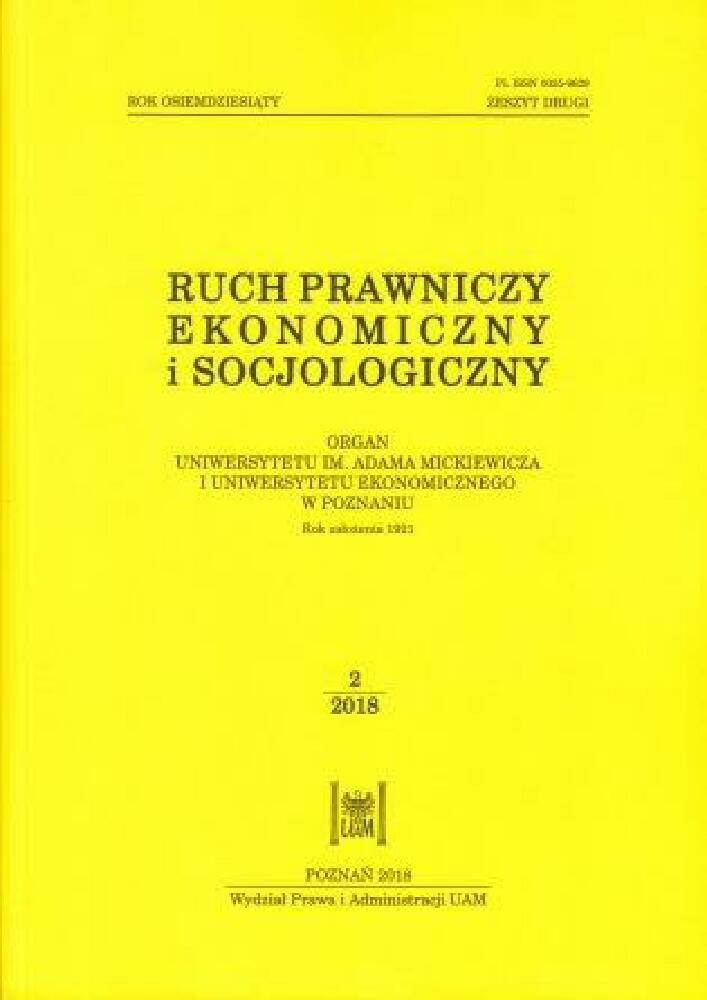Abstrakt
W niniejszym artkule podjęto próbę odpowiedzi na pytanie, czy oceny ratingowe stanowią punkt odniesienia dla inwestorów dokonujących bezpośrednich inwestycji zagranicznych w sytuacji wystąpienia kryzysu finansowego. W badaniach odniesiono się do kryzysu azjatyckiego z końca XX w., weryfikując powiązanie oceny ratingowej z udziałem bezpośrednich inwestycji zagranicznych w PKB przed i po kryzysie. Artykuł składa się z wstępu, trzech części zasadniczych oraz zakończenia. We wstępie zaprezentowano cel główny niniejszego artkułu oraz główną hipotezę badawcza. W pierwszej z części zasadniczych dokonano przeglądu literatury poświęconej relacjom występującym pomiędzy bezpośrednimi inwestycjami zagranicznymi oraz ocenami ratingowymi. W drugiej części zasadniczej zaprezentowano podstawy metodologii nadawania ocen ratingowych trzech najważniejszych agencji ratingowych na Świecie – Moody’s, S&P oraz Fitch. Trzecia część zasadnicza zawiera wyniki badań nad weryfikacją związku pomiędzy oceną ratingową oraz bezpośrednimi inwestycjami zagranicznymi. W zakończeniu autorzy opracowania ustosunkowali się do głównego celu oraz hipotezy badawczej, a także wskazali asumpty do dalszych badań. Przeprowadzone badania, z wykorzystaniem jednoczynnikowej analizy ANOVA i komplementarnej dla niej metody Tukeya, pozwoliły na pełną realizację celu głównego niniejszego artykułu. Wyniki potwierdzają hipotezę główną, stanowiącą, że po kryzysie azjatyckim kraje o wysokiej ocenie ratingowej charakteryzowały się relatywnie większymi napływami bezpośrednich inwestycji zagranicznych.
Bibliografia
Aczel, A. (2000), Statystyka w zarządzaniu, Wydawnictwo Naukowe PWN, Warszawa.
Asiedu, E. (2002), On the determinants of foreign direct investment to developing countries: is Africa different?”, World Development 30(1): 107–119.
Balling, M. (2004), Objectives and theoretical foundations of the European Commission’s 1999 action plan concerning the framework for financial markets, Journal of International Banking Regulation 5 (3): 256–282.
Bank Światowy, www.databank.worldbank.org/data/reports.aspx?source=2&series=BX.KLT. DINV.WD.GD.ZS [dostęp: 19.03.2018].
Bannier, C. E., Pain, N. (2009), The economic function of credit rating agencies – What does the watchlist tell us?, Journal of Banking & Finance 34(12): 3037–3049.
Barron, J., Ni, J. (2008), Endogenous asymmetric information and international equity home bias: the effects of portfolio size and information costs, Journal of International Money and Finance 27: 617–735.
Biswas, R. (2002), Determinants of foreign direct investment, Review of Development Economics 6(3): 492–504.
Blonigen, B. (2002), Tariff-jumping antidumping duties, Journal of International Economics 57(1): 31–49.
Cai, P., Kim, S.-J., Gan, Q. (2016), The Effects of Sovereign Credit Rating on Foreign Direct Investment, 15th World Business Research Conference, Tokyo.
Cantor, R., Packer, F. (1996), Determinants and Impact of Sovereign Credit Ratings, Economic Policy Review 2(2): 37–54.
Dittrich, F. (2007), The Credit Rating Industry: Competition and Regulation, University of Cologne – Department of Economics.
Fitch, https://www.fitchratings.com/site/re/901261, [dostęp: 21.03.2018].
Gande, A., Parsley, D. (2004), Sovereign Credit Ratings and International Portfolio Flows, Joint ECB/IMF Workshop, 16–17 November 2004.
Greenwood, J., Jovanovic, B. (1989), Financial Development, Growth and the Distribution of Income, NBER Working Papers, no. 3189.
Groh, A.P., Wich, M. (2012), Emerging economies’ attraction of foreign direct investment, Emerging Markets Review 13: 210–229.
Hatchondo, J. C. (2005), Asymmetric Information and the Lack of International Portfolio Diversification, Inter-national Economic Review 49(4): 1297–1330.
IOSCO, 2015, Code of conduct fundamentals for credit rating agencies: Final Report.
Janicki, H.P., Wunnava, P.V. (2004), Determinants of foreign direct investment: empirical evidence from EU accession candidates, Applied Economics 36: 505–509
Kim, S-J., Wu, E. (2006), Sovereign Credit Ratings, Capital Flows and Financial Sector Development in Emerging Markets, Emerging Markets Review 9(1): 17–39.
Levine, R. (1991), Stock Markets, Growth and Tax Policy, The Journal of Finance 46(4): 1445–1465.
Levine, R. (1997), Financial Development and Economic Growth: Views and Agenda, Journal of Economic Literature 35.
Moody’s, https://www.moodys.com/researchdocumentcontentpage.aspx?docid=PBC_104485 9, [dostęp: 21.03.2018].
OECD, 2008, OECD Benchmark Definition of Foreign Direct Investment, 4th Edition.
S&P, https://www.standardandpoors.com/ja_JP/delegate/getPDF;jsessionid=8186900B7B18B 39517F85DE271BD153A?articleId=1975930&type=COMMENTS&subType=REGULATORY, [dostęp: 21.03.2018].
Sane, M. (2016), Determinants of Foreign Direct Investment Inflows to ECOWAS Member Countries: Panel Data Modelling and Estimation, Modern Economy 7: 1517–1542.
Sinclair, T.J. (2005), The New Masters of Capital: American Bond Rating Agencies and the Politics of Credit-worthiness, Cornell University Press.
Wheeler, D., Mody, A. (1992), International investment location decisions: the case of US firms, Journal of International Economics 33(1–2): 57–76.
White, L.J. (2008), The Credit Rating Industry: An Industrial Organization Analysis, NYU Working Paper No. EC-01-02.
Van Nieuwerburgh, S., Veldkamp, L. (2009), Information immobility and the home bias puzzle, Journal of Finance 64(3): 1187–1215.
Licencja
Prawa autorskie (c) 2018 WPiA UAM

Utwór dostępny jest na licencji Creative Commons Uznanie autorstwa – Użycie niekomercyjne – Bez utworów zależnych 4.0 Międzynarodowe.




